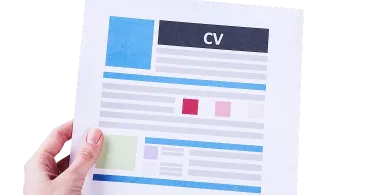Table of contents

There is no doubt that an academic CV is an important tool when applying for new jobs or for professional development.
Generally, such a CV will be just one of several important documents including your research statement, cover letter, sample courses, as well as a teaching statement.
Whether you would like to create your very first academic CV sample, or you need to update your existing one, here are the best tips from careers experts on how to write an outstanding application document and avoid widespread mistakes.
If you’ve already searched for CV or resume templates on the Internet, you’ve probably come across various types of documents. One academic CV template can be of simple design, while the other one is too flashy. We know that you don’t have much time to grab the attention of the HR manager. However, overthinking design elements and making your document too creative is not what they are looking for.

Have a look at academic CV examples with readable fonts such as Arial, Times New Roman, or Courier. We recommend you use the same font throughout the whole document. Also, when you are writing a CV, don’t use complex design elements, photographs, and lots of graphics – it is not the best way on how to write an academic CV.
The Internet is swarming with information that an application document shouldn’t be longer than two pages because the recruiters will pay attention only to the most important details.
“This fact doesn’t apply to academic CV graduate student as this is the only field where an applicant can create their document as long as they want it to be,” says Emma Baker, a career advisor for the graduate school at King’s College London.
One of the top mistakes is certainly when candidates tell lies on their CV in an attempt to catch the hiring manager’s attention and outshine the rest of the competition. However, career coaches don’t advise adding incorrect information in your application document as the truth will be revealed sooner or later.
Also, many applicants don’t know how to highlight the most important and relevant details on their CV examples academic. If your document is not scannable and turns into a long list of all your life, it won’t grab attention and help you stand out.

Put the information about your grants, publications, and places where you have worked in the middle so that it’s visible.
There is no single academic CV format that works perfectly for everyone. But if you keep the most relevant and significant information on the first page and remember about the rule of 90 seconds when the HR manager will review your paper, you will have more chances of getting noticed.
One of the most surprising facts about academic CV formats is that it is actually more helpful to use reverse chronological order instead of a normal chronological one. The reason for this is that it helps to notice the recent achievements and publications of an applicant instead of casting a glance at a paper that was dated 2005.
Put your most recent accomplishments in the middle so that the recruiters see your key strengths and what makes you different from the other candidates.
Hopefully, these tips will help you create a compelling academic CV and win the desired position.
When it comes to the academic field such questions as “How to write an academic CV for PhD application?” or “How to write an academic CV for grad school?” usually arise. An academic CV differs from a simple one as it contains information about your publications, academic awards, and research combined with general information from non-academic papers.
ResumeWritingLab’s CV writing service online can cope with academic CV writing within several business days. Still, if you choose an independent writing, consider the following details:
There are fundamental moments about academic CV writing. So, if you don’t know how to write an academic CV undergraduate, you must look through this information again or submit an order on our website.